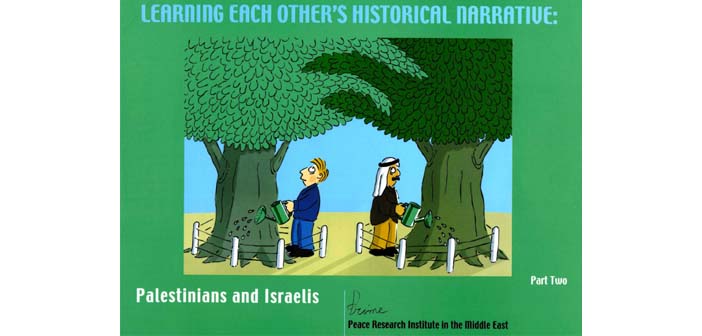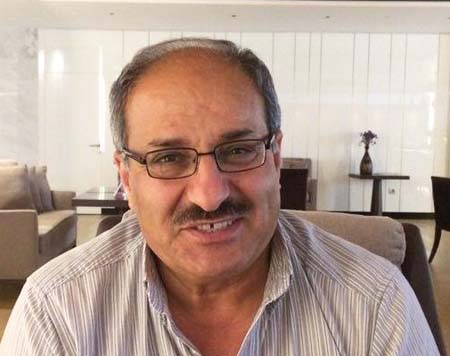‘Düşman, hikayesini henüz duymadığımızdır’


‘Learning Each Others Historical Narrative’ (Birbirimizin Tarih Anlatılarını Öğrenmek) rehber kitabı, PRIME (Ortadoğu’da Barış Araştırmaları Enstitüsü) tarafından başlatılan uzun soluklu bir projenin nüvesi. Hafıza Merkezi’nin geçtiğimiz günlerde İstanbul’da düzenlediği ‘Geçmişle yüzleşme’ konulu atölyesine, projeyi yürüten isimlerden Sami Adwan da katıldı. Bethelem Üniversitesi profesörü, PRIME Eş Direktörü Adwan, tarih anlatısında ötekinin hikayelerini okuyabilmenin, barış için çok daha doğru bir yol sağlayabileceği görüşünde.
Bu projenin içeriğinden bahsedebilir misiniz?
14 senedir devam eden bu projede kitap yazımı safhasını bitirdik, şu anda öğretmenleri ve diğer eğitim profesyonellerine kitabı nasıl kullanacakları ve tarih eğitiminde çok yönlü bir bakış açısının önemi üzerine eğitim veriyoruz. Öğretmenlerin tek bir bakış açısıyla eğitim vermekten kaçınması gerekiyor.
Bu neden önemli?
Çünkü tarih tek değildir, pek çok farklı tarih anlatıları vardır. Sizin bakış açınızın dışında anlatılara da eğitimde yer vermek, en başta çocuk hakları kapsamında değerlendirilmeli. Çocukların büyük resmi görmesi, çok yönlü bir bakış açısına sahip olması çok önemli. Çocukların farklı tarih anlatılarını öğrenmesine imkan sağlamak, çeşitlilik ve çoğulculuğu kabullenmek ve aynı zamanda tarihe eleştirel bir bakışla yaklaşmak anlamına gelir. Çünkü tarih aynı zamanda eleştirelliğin, tartışmanın ve yorumun var olduğu bir alan. Tarih dersleri çocukların ezberlediği ve sınavda sorulara cevap verdiği bir alan olmamalı.

Batı Şeria'da yaşayan bir Filistinli olarak bu projeye dahil olmanızdaki kişisel motivasyon neydi?
1967’deki Altı Gün Savaşları’nda İsrail Batı Şeria'yı işgal ettiğinde ben çocuktum. Her türlü mezalime ve şiddete tanıklık ettim. Pek çok kez dövüldüm, pek çok kez gözaltına alındım, altı ay boyunca hapiste kaldım. Ve neticede şiddet temelli yaklaşımın İsrail - Filistin çatışmasına çözüm getirmeyeceğini fark ettim. Bu yaklaşım sadece çatışmanın süresini uzatıyor ve insanlara daha fazla acı veriyor. Bir eğitim sistemi kurarak, çocukların iki tarafın anlatısını da keşfetmesini sağlamak lazımdı. Bu yaptığımız şey, bir tür insanileştirme çabası. Ötekinin hikayesini okuduğunuzda, neredeyse 60 yıldır devam eden işgal sırasında yaşanan şiddetin anlamsızlığını fark edersiniz. Bu yaklaşım hem bir barış inşa etme projesi, hem de eğitimin gelişmesi için bir model. İşgal altında yaşayan bir Filistinli olarak benim umudum, bu projenin İsrail ideolojisini etkilemesi ve işgal altında yaşayan Filistinlilerin de bir görüşü, tarihi, gelenekleri ve kültürü olduğunu görmeleri. Çocuklarım ve torunlarımın, benim çocukluğumdan ve bugünümden daha iyi bir koşullarda yaşaması için çalışıyorum.
Kimin haklı, kimin haksız olduğundan bağımsız olarak insanların tarihe ulaşımı olmalı; böylece insanlar birbirine farklı gözlerle bakabilir. Düşman, hikayesini henüz duymadığımızdır.
İsrail ve Filistin okul kitaplarında karşı taraf nasıl düşmanlaştırılıyor?
İsrail haritalarında sadece İsrail gösterilir. Filistin ve Filistinli kelimesi kullanmaktan imtina edilir, genelde ‘Araplar’ ifadesi kullanılır. Filistinliler İsrail kitaplarında insan olarak değil, şiddet eylemine geçmeyi bekleyen bir kalabalık olarak tarif ediliyor. Görsellerde deveyle ve eşekle beraber gösterilmesi vb. uygulamalarla ilkel bir yaşamları olduğuna yönelik imalar var. Ya da örneğin Kudüs, İsrail’in başkenti olarak tanımlanıyor, bu da siyasi ve dini olarak Filistinli Hıristiyan ve Müslümanların Kudüs üzerindeki hakkını gözardı etmek anlamına geliyor. Bunlar düşmanlaştırmanın farklı yüzleri.
Peki Filistin kitaplarında İsrailliler nasıl temsil ediliyor?
Filistin kitaplarındaki haritada da İsrail toprakları gösterilmez. Filistinliler İsraillileri yaptıkları üzerinden tanımlıyor. Örneğin İsrailliler, Filistin suyunu, toprağını çalanlar olarak gösteriliyor. Filistinlilerin kitaplarında da Yahudilerin kutsal mekanları gösterilmez, onlardan bahsedilmez.
Sizin hazırladığınız kitaplar okullara dağıtılabiliyor mu?
İki tarafın eğitim bakanlığı da kitabı kabul etmiyor. Bazı öğretmenler ve okullar kendi inisiyatifleriyle kullanabiliyor ya da çocuklara önerebiliyor. Zaten önemli olan kitabın içeriği değil, önerdiği model. Yani bir öğretmen Müslümanlar için kutsal kabul edilen bir mekandan bahsederken, o mekanın Yahudi tarihi için ne ifade ettiğini de anlatacak mı? Ya da bunun tam tersi olacak mı? Bizim için önemli olan bu.
Kitap başka ülkelerde kullanılıyor mu?
Kitabımız İngilizce, Almanca, Fransızca ve İtalyancaya çevrildi. Makedonya’da bir model olarak kullanıldı. Fransa, İspanya, İtalya ve ABD’de bazı okullarda kullanılıyor. Dünyadaki tüm eğitim sistemlerine uygulanabilir bir model. Örneğin Kuzey Kıbrıs ve Güney Kıbrıs tarihine, Almanya tarihine, Türkiye ve Ermenilerin tarihine de uygulanabilir bir model. Ama maalesef kitabımız yerelde resmi olarak kabul edilmiyor. Onları suçlayamayız, resmi yetkililerin böyle yenilikçi projeleri kabullenmesi kolay değil. 2002’de başladığımızda bunun çatışma sonrası bir proje olacağını düşünmüştük. Ama ardından İkinci İntifada yaşandı. Dünya çapında ödüller kazanmış bu projenin kendi vatanımızda kabul edilmeyeceğini bile bile çalışmaya devam ettik biz de.
Bu çalışmanın Filistinli ve İsrailli çocukların üzerindeki etkisini göremeyecek olmak üzücü. Herhangi bir geri bildirim almadınız mı?
Filistin’de kitabı kullanan birkaç öğretmenden geri bildirim aldık. Öğrencilerden farklı tepkiler geliyormuş. Bazı öğrenciler “diğer tarafın hikayesini öğrendiğimiz iyi oldu, kendi tarihimi ve kendi hikayemi daha çok okumam konusunda beni teşvik etti, şimdi neden öyle davrandıklarını daha iyi anlıyorum” diyor örneğin. Bazılarıysa “Onların hikayesini öğrenmemeliyiz; kafa karıştırıcı ve propaganda dolu” diyor. Kolay bir süreç değil elbette.
Bu çalışma nasıl devam edecek?
Yeni bir kitap hazırlama aşamasındayız. Filistinlilier Holokost’tan, İsrailliler ise ‘Nakba Günü’nden bahsetmiyor. Biz de bunlarla ilgili rehber bir kitap hazırlayacağız. Ötekinin travmasından öğrenmek diyebileceğimiz bir süreç bu. Belki bu iki tarafa da insan hakkı ihlallerinin ve ablukanın bitmesi konusunda bir fikir verir. Umarım Filistin bir gün özgür olacak ve İsrail’le yan yana yaşayacak. Eğitim bunu sağlayabilecek, daha yavaş ilerlese de siyasetten çok daha doğru bir yol. Çünkü barış temelli bir eğitim sayesinde önceki kuşakların hatasını tekrar etmeyen bir kuşak yetişebilir. İkincisi de barış anlaşmasını destekleyen bir nesil ortaya çıkmış olur. Üçüncü olarak da insanlar bu süreçte hükümetlere baskı kurabilir ve doğru yolun bu olmadığını anlatabilir. Neticede bu insanlar geleceğin yöneticileri olacak.


